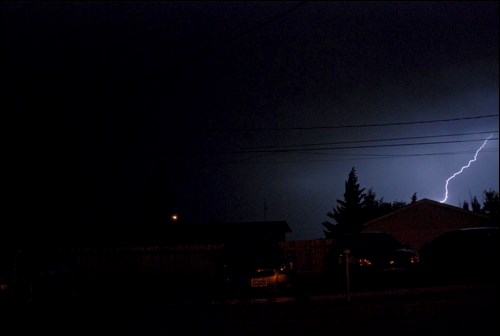With the near-nightly thunderstorms the Northwest have seen for the last few weeks, compulsive weather-watchers may be scratching their heads at the "watches" and "warnings" given out seemingly at random.
The terms do have a specific meaning, however. A weather watch means that there are weather conditions that are favourable for a storm or severe weather. A watch does not mean that precautions should not be taken, because a severe storm could be on the way eventually.
A watch may be upgraded to a warning, however. A warning states that severe weather is occurring or will occur. A warning could mean a storm is anywhere between six and 24 hours away, or could be issued in response to the formation of a storm. In the latter case, the storm could be as close as half an hour away. If a warning is issued, precautions should be taken.
The terms can also be used for tornadoes. A tornado watch means that there is a possibility of a tornado developing in the region. There have not been any tornadoes seen. Upon hearing of a tornado watch, you should keep alert and keep close tabs on the weather.
A loud roar sounding similar to a freight train, large hail, dark green or orange-grey skies or large, dark, low-lying clouds are all signs that a tornado could be on the way soon.
If a tornado warning is issued, it means that a tornado has actually been sighted or picked up on radar. Anyone hearing a tornado warning should behave as if a tornado is on the way - take shelter immediately and listen to radio weather updates until the coast is clear.
If a tornado is on the way, you should get into a permanent structure as quickly as possible. Mobile homes offer little protection from tornados and cars cannot be trusted to "outrun" them. If you cannot get to a basement, get to a room in a building that is low and as far from corners, windows, doors and outside walls. If outside, do not attempt to hide underneath a bridge, as winds will actually be faster and you will likely be at a greater risk than in the open. A ditch or ravine is the ideal place to hide if there are no structures around. Lie down and put your head on your hands.
Warnings and watches for all of Canada can be easily checked at www.weatheroffice.gc.ca.




